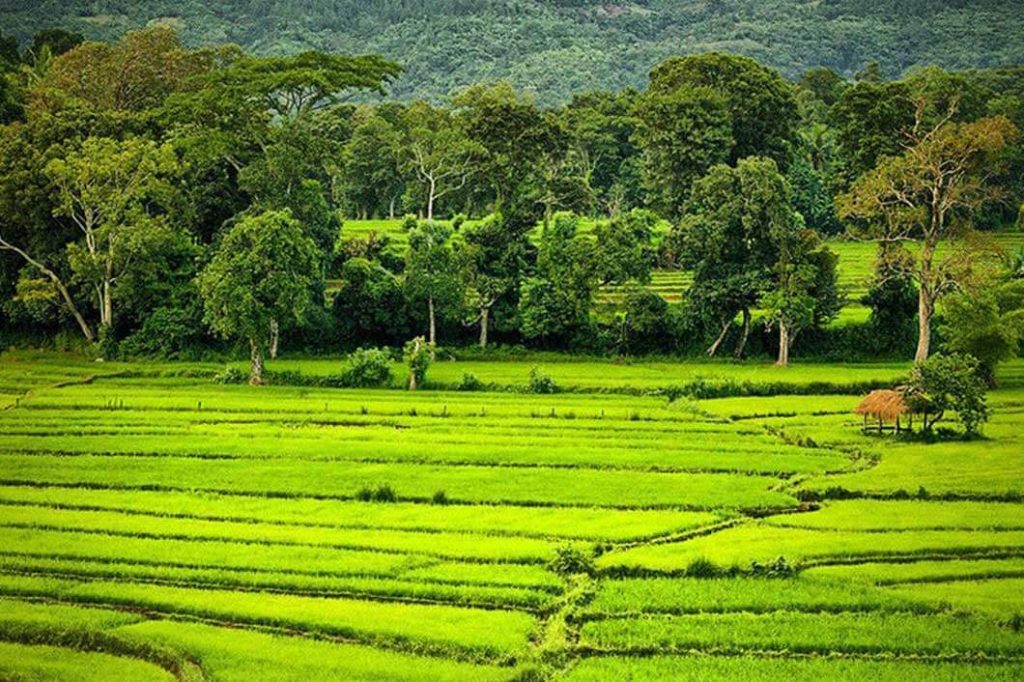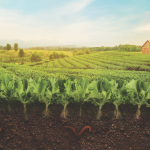Stakeholders in Agriculture talk Regenerative Agriculture

At the World Agri-Tech Innovation Summit in San Francisco this week, regenerative agriculture was a hot topic. It’s no surprise, as regenerative ag has had a swarm of interest in the past couple of years from government, corporations, consumers, and agriculture.
On a panel, leaders from Syngenta Seeds, Kellogg Company, The Nature Conservancy, and Moreland Farms, discussed ways to define regenerative agriculture and how to apply technology across different regenerative ag systems.
They are:
- Jeff Rowe, president, Syngenta Seeds
- Janelle Meyers, chief sustainability officer, Kellogg Company
- Matt Moreland, partner, Moreland Farms
- Michael Doane, global managing director of food and freshwater systems for The Nature Conservancy
DEFINING REGENERATIVE AGRICULTURE
Just as the definition of sustainability in agriculture has seemed elusive and variable, so too is a definition for regenerative ag.
“I am personally on a journey with this,” Jeff Rowe, president of Syngenta Seeds, says. “It is one of those terms I kind of thought would come and go, like a lot of things I’ve seen in agriculture.”
He continues to share three key components that are meaningful to him. First, the restoration and renewal of biodiversity. Second, improvements in soil health, of which, Rowe believes we are just starting to scratch the surface. Third, that increasing productivity and yield is one of the most important roles agriculture plays.
“Agriculture is the single-most important factor for reducing greenhouse gas footprint of the industry. So our ability to continue to increase yields has a direct impact on our ability to have a more climate-smart agriculture,” he says.
For Janelle Meyers, chief sustainability officer of Kellogg Company, regenerative ag is about soil health, water conservation, biodiversity on farms, and equitable livelihoods for communities and farmers.
Matt Moreland, who farms with his wife and three sons on the Kansas-Oklahoma border, says, “Regenerative agriculture to me is rebuilding soil from the bad methods of heavy tillage and monocrop cultures that still persist around me today.”
Moreland makes decisions about the management of his farm by using data collection and analytics. But soil tests haven’t provided consistent results. He instead relies upon other factors to gauge success.
“One way that we know our soil is healthy is by our yield results,” says Moreland.
He also monitors the effects of climate change on the farm. Moreland’s goals are to build soil that holds water longer, doesn’t erode, and has better organic matter when both wetter and drier periods throughout the year challenge his crops.

“We have intensified our rotation so that we have crops growing in a season when we wouldn’t typically need them, to create a better sink in the soil,” he explains. “When we have wheat growing, it’s a living root holding benefits in the soil. On other fields, we leave last year’s corn or soybean roots.”
SOLUTIONS FARMERS NEED
Rowe, who calls himself a “half farmer” with a family farm in northern Illinois, says, “Systems need to be designed so that they’re easily adapted by farmers. They’re dealing with all kinds of uncertainty right now, particularly with disruptions in the supply chain. Being able to partner with farmers in a way that is easy and low-risk is critical.”
He calls out cover crops as an example of a practice that isn’t one-size-fits-all.
“Around my family farm, cover crops are not widely used. We’ve been experimenting with them, but it’s difficult to find someone who sells cover crops and then find someone else who applies them,” he explains.
Syngenta, Rowe says, is focused on getting the right innovation into the hands of farmers. Syngenta’s approach to regenerative agriculture solutions is to collaborate and work as quickly as possible with partners to implement solutions.
Incentives are still part of the regenerative ag conversation, says Meyers. The Kellogg Ingrained program in the Lower Mississippi River Basin is an example of this. The five-year program includes a $2 million investment in training for rice farmers to support better irrigation and nutrient management and other soil health practices. They also provide a $20 per metric ton incentive to farmers for improvements in identified environmental metrics.
Moreland participates in the USDA Conservation Stewardship Program, which provides incentive payments for certain practices. But he remains wary of the flurry of carbon markets.
“I already know that we have a great carbon sink going. We’re very skeptical of these quick-to-the-market companies,” Moreland says. Michael Doane, global managing director of food and freshwater systems for The Nature Conservancy, says there isn’t a simple “find and replace” to change sustainable food systems into regenerative food systems.
“Our food system is vast. It’s our highest single interaction with the natural world, occupies 40% of the land, a huge percentage of the water we abstract, and it’s deeply embedded in our ability to manage climate regulation,” he says. “What we now need is for the food system to be a solution. It’s not enough to minimize the trade-offs. It has to be part of the offense that we unleash over the next generation and part of the restoration economy.”
Source: https://www.agriculture.com/crops/soil-health/a-farmer-agribusiness-and-food-company-talk-regenerative-agriculture

 Previous Post
Previous Post Next Post
Next Post